How to Render Tallow and Tallow Uses
This post may contain affiliate links. Read our disclosure policy here.
Do you have some beef suet or beef fat that you need to render down to make it useful? Here’s a complete tutorial on how to render tallow and many tallow uses!
Why Render Beef Tallow
Now I’m going to warn you before you go any further, this isn’t the most beautiful tutorial I’ve ever posted here on LHL. But I will also tell you that it might be one of the most useful. So if animal fat doesn’t bother you, read on!
Last fall we were finally able to butcher our own cow. No, we didn’t do it by hand. Personally, I think it was well worth the cost, time, and stress to let the local butcher do his job! But we did raise this guy here on our little farmstead and even though we’d purchased meat in bulk before from family, this was the first full cow that we’d raised by ourselves. You better believe that I was going to get my money’s worth!
When we spoke to the butcher about the processing I was very clear that I wanted back any useable parts of the cow, including the suet (fat) and the bones that are best for stock. You can use grass-fed beef or conventionally raised beef to make tallow with.
I was very happy that I made this request because we got back over 100 pounds of bones for stock making and 6 very large bags of suet for making tallow. We are currently on our second batch of tallow and today I wanted to share with you how we make this wonderful product.
Tallow is useful for just about everything from frying veggies to using as a lotion on your skin. I don’t think you can find a better-tasting homemade french fries than one that was fried in fresh tallow.
Finished tallow has a high smoke point, higher than most vegetable oils, and the rendering process is really very easy.
See below for a list of tallow uses. Let’s get to making our rendered tallow!
Wet Rendering vs Dry Rendering
There are 2 methods to rendering your tallow. The first is wet rendering where you add a little bit of water to the bottom of the large stock pot or slow cooker that you are using before you add in the beef. This is the method I use below.
The second method is dry rendering tallow in which you don’t add any water to the bottom of the pot before putting in the fat. Supposedly this is to help prevent the tallow from going rancid after being stored for a long term.
Personally, I store the extra tallow in the freezer so I don’t have a concern about it going rancid. Making it in the slow cooker is easier for me and the water helps it not to burn and ruin the entire batch.
However, if you plan on storing your rendered beef fat at room temp, you might want to use the dry method.
Where can you get beef fat to render?
If you have your own cow butchered, simply ask your butcher to get the suet back. There are several areas on the cows where they can get the fat trimmings, but the suet (fat from around the kidneys) is the best.
If you are not butchering a cow but want to make your own tallow, go to any butcher shop and ask for beef suet.
How long does it take to render beef tallow?
It will take at least 8 hours to render down your tallow in the slow cooker, depending on how much you put in your pot to make at once. If you put in less it may take less time but still several hours for sure.
What temperature should I render tallow?
Beef fat will begin to render at about 130-140 degrees F. You need to be able to maintain this temperature steadily while it’s rendering down.
What is the difference between rendered fat and tallow?
There is no difference between the two. Tallow is just the name for rendered down beef or sheep fat. Rendered pig fat (or leaf fat) is called lard. And rendered chicken fat is called schmaltz. You can use this same method to render lard or schmaltz if you’d like, although the timing might be slightly different.
How does tallow taste?
Tallow is not a completely odorless item, however, it has a neutral/mild taste. I often use tallow in baked goods and there is no lingering beefy taste or smell. It just tastes amazing!
I don’t want to make tallow…where can I buy it?
If you plan on buying tallow instead of making it yourself, I would recommend getting some that is from a grass-fed cow so that you know it was a better quality beef than just something that came from a feedlot and might have been fed unsavory rations. You can get tallow from Amazon, Thrive Market, and Azure. Fatworks and Thousand Hills are both good brands.
Instructions for How to Render Tallow
The good thing is…tallow is super easy to make. Messy, yes, but very easy. The bad thing is that decent suet can be hard to find. If you are searching for some, be sure and ask your local butcher first, many families may not get back their suet when they butcher a cow.
All you need to render tallow is a slow cooker, a bit of water, and your suet. You will also need a strainer and freezer containers to clean and store the finished product.
Start by placing 1/2 cup of water in a slow cooker. If you have more than one slow cooker, use the one that you don’t care about as much. The one pictured above is my stock/tallow slow cooker. It’s very useful but no longer very pretty!
*Note, you can use a stock pot or a dutch oven and melt down the tallow on the stove. This method will work fine but it will need a closer eye.
I generally use 1/2 cup of water if I put in 2 pounds or if I put in 5 pounds, it’s just to keep the suet from burning in the bottom of the slow cooker while it renders.
Time to place the suet in the slow cooker! As you can see, I just put mine in as is since I’m storing the bags of suet in the freezer until I’m ready to work with them.
If you have thawed suet it will take much less time to render if you are able to cut it into small pieces. (You can do this by hand with a sharp knife or in the food processor.) Either way will work though.
Suet is the fat trimmings from your cow, typically taken from around the kidney and loin areas.
This is a picture after the suet has been cooking on high for about 2 hours. You can see that the pieces have come apart and sit much better in the slow cooker now. You will want to stir around the pieces every hour or so to keep them from burning.
Cooking them on high and stirring them will help get the job done faster than cooking them on a low heat.
This picture was taken after about 3-4 hours of cook time. It doesn’t look much different from the top but you may be able to see how the suet is beginning to cook down and it’s only filling up the slow cooker about half way now.
This picture was taken after about 5-6 hours of cooking. You can clearly see that most of the suet has become liquid and there is only a small amount of white pieces that still need to cook down. At this point your mixture will be bubbling pretty good and you will want to turn it down to a lower tempature setting if you haven’t already done so.
Once most of the white is gone from your suet pieces and just the cracklings remain, it’s time to turn off the slow cooker. You can let the mixture sit for just a little bit to cool down but do not let it sit for long or it will harden and create a big mess.
(I apologize here for the lack of pictures of the next part, straining the liquid has to be done quickly and it can be rather messy….I didn’t get pics this time!)
Next, you will place a fine Mesh Strainer like the one pictured above over a large bowl. You will need to have your jars and containers ready to go. I’ve tried placing the melted tallow directly into the jars with a funnel and cheesecloth or paper towel but that made a huge mess, the mesh strainer is the way to go.
You will want to pour the rendered liquid fat through the strainer and the funnel to get it into your jars and to remove any leftover chunks or impurities.
Very carefully pour the liquid into the bowl while straining it through the strainer. Once you’ve emptied the crock pot, move the strainer out of the way and quickly ladle the liquid into your jars or containers. I use jelly size mason jars with plastic lids as my freezer containers. It’s a great way to hold the hot liquid and a good size to get out when you need a jar…not too big.
The liquid will begin to cool very quickly but per sure and let the jars sit for at least half an hour before placing them in the freezer, you don’t want any jars to break. This is liquid white gold!
Isn’t the final product beautiful?
The final product is shelf-stable but retains the best flavor if stored long-term in the freezer or fridge. You can keep the jar you are using at room temperature or store it in the refrigerator. I keep one on the counter for regular use and put the rest in the freezer for storage until later.
Tallow Uses
You can use the tallow in your cooking as you would butter.
You can also use it (slightly softened or at room temp) as a lotion for very dry skin (you only need a little bit).
If you want to create something completely new from the tallow. I’d recommend making tallow soap or tallow balm. My favorite soap making book is Simple and Natural Soapmaking.
I like to use tallow in baking recipes instead of shortening. I make some wonderful dairy-free scones and an allergen-free pie crust using tallow that my family just loves! (Yes, it’s the one pictured above, remind me to share the recipe this fall, it’s AMAZING.)
You can also use tallow for soap or candle making but I haven’t tried either of those options yet since we love it as a cooking/baking product so much. However you decide to use your tallow I’m sure your family will enjoy it just as much as ours!
Have you ever used or made your own tallow? What was your experience?
Did you find this tutorial helpful? Be sure and share with your friends on Facebook, Twitter, Instagram, Pinterest, and through Email using the sharing buttons below!

This blog post on How to Render Tallow and Tallow Uses was originally posted on Little House Living in April 2017. It has been updated as of February 2023.

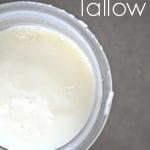

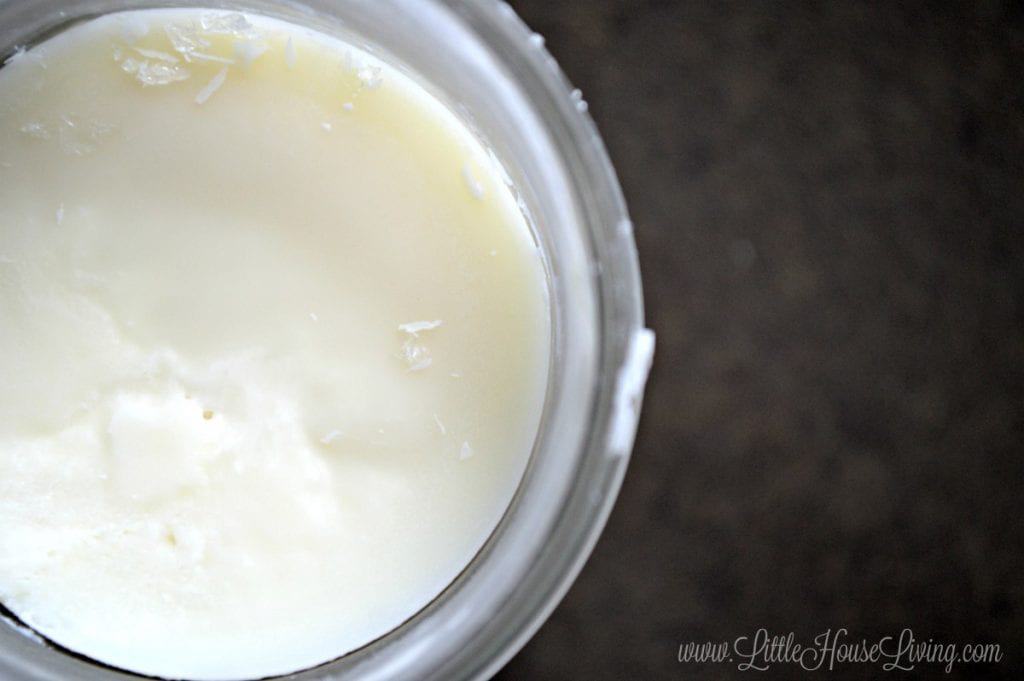
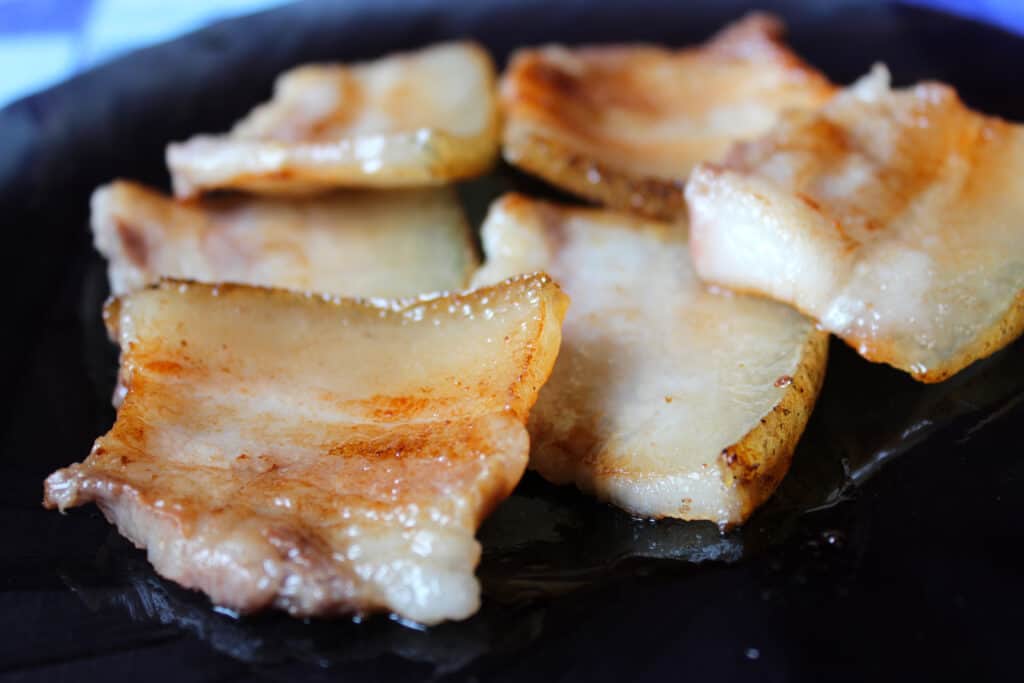
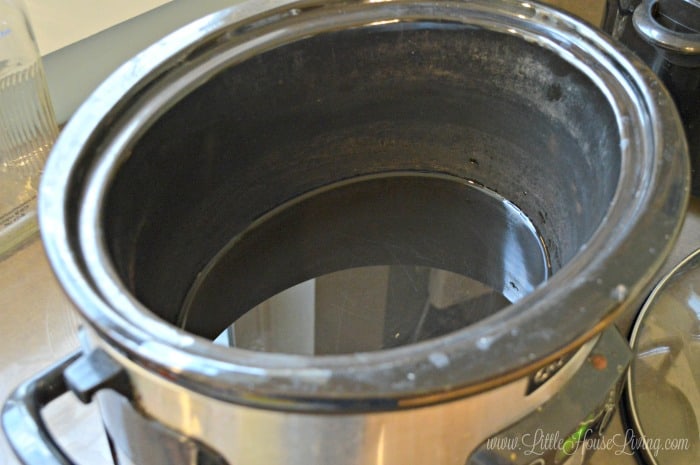
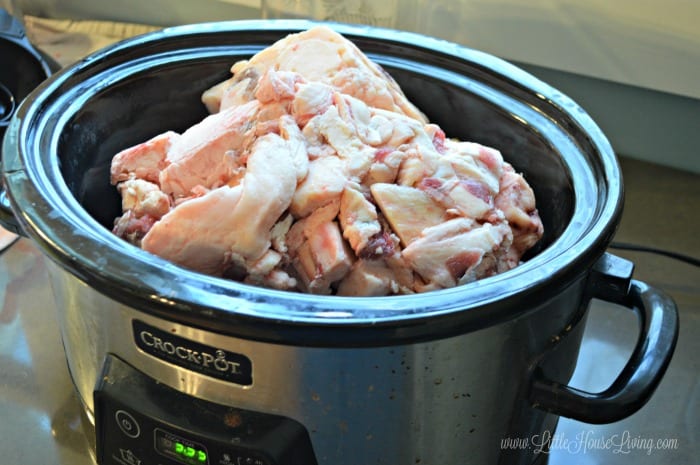
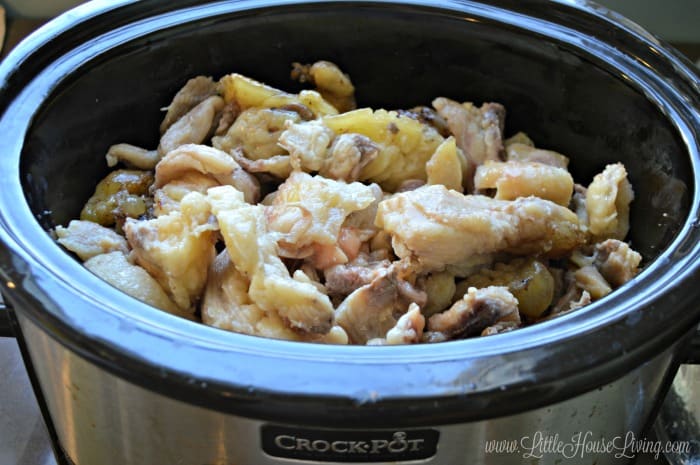
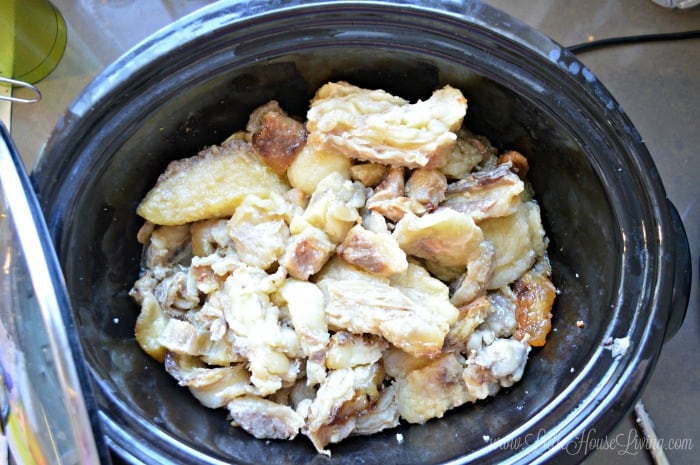
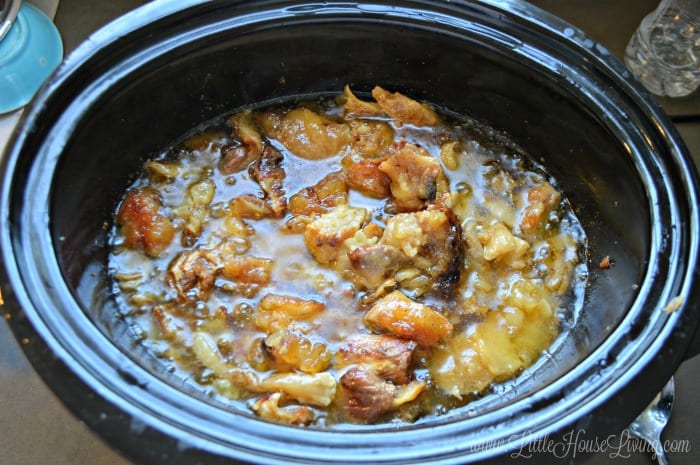
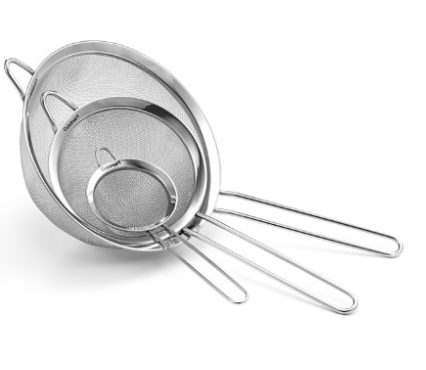
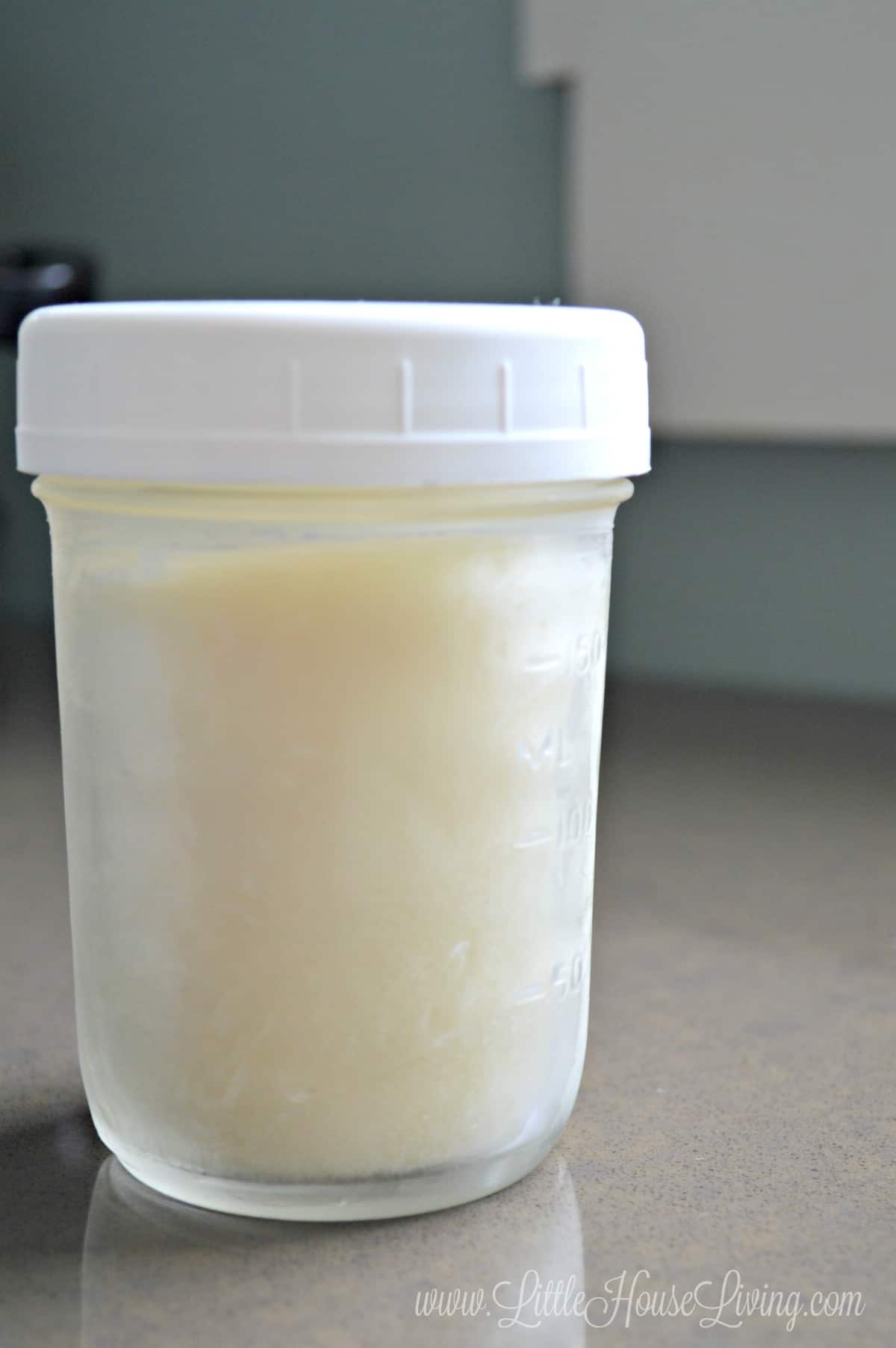
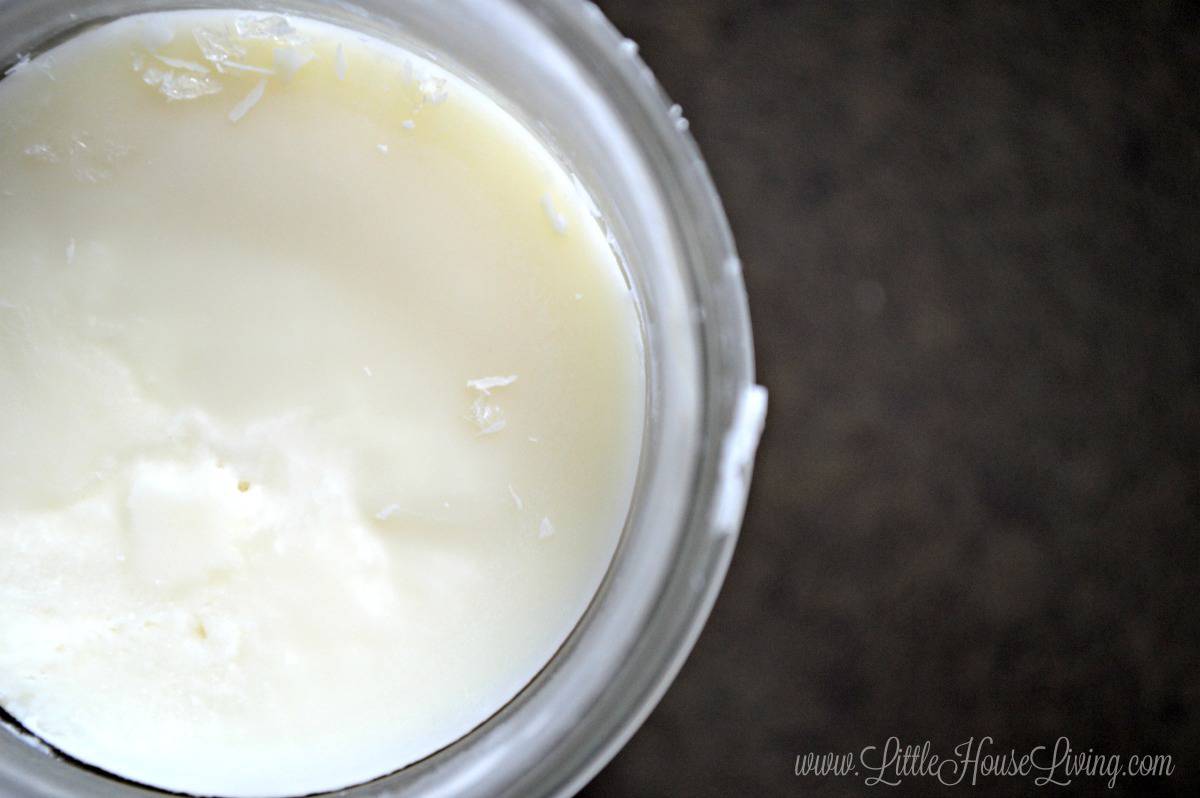
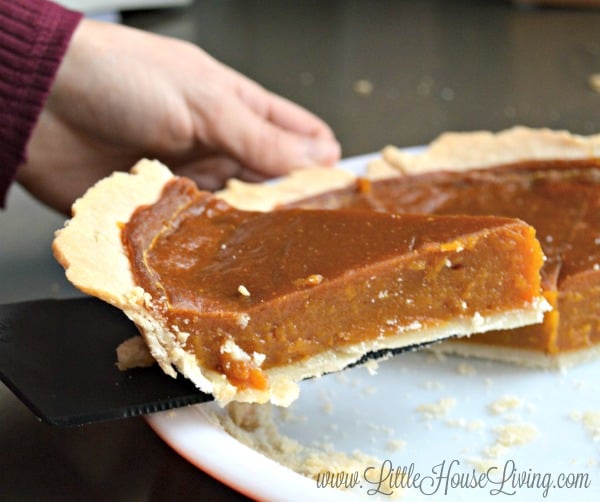

Do you start from frozen? Do you put the lid on the slow cooker? How long is the process over all? I have some pork tallow in the freezer waiting for me to start this process. Thanks in advance.
I do start from frozen and yes, I keep the lid on the entire time. The process for me has been about 8 hours depending on how much in is the bag that I use (around 4-5lbs). Pork fat may be a bit softer so it might take a little less time.
No, I have never used tallow.
This,was very interesting.
Thanks.
valerie.
I have not made tallow but I have mad lard the same way. It kinda stinks up the house with a piggy smell so I will make it in the crock pot outside on the patio.
I admire you all for rendering tallow and lard. Honestly, I don’t have the stomach for it. I’ve never used vegetable shortening because of the hydrogenated ingredients and preservatives. What about using my go to ingredient…butter? Do you prefer tallow over butter?
Butter has a wonderful flavor that can’t really be replaced but I’ve recently had to remove all dairy from my diet to bring down inflammation in my body so we prefer tallow now 🙂
Very good information. I have heard of tallow but didn’t know how it was made. I might have to try this when my son has a steer ready to butcher.
You could grind the fat for easier rendering.
Yes, if you were using thawed suet you would have this option.
I have done had 5 butchered now doing one more the first week of may never thought of the tallow thing thank you.
Glad to help! 🙂
I am very curious. I never heard of rendering talo. Is this pure fat. Why do you feel it is better for you and if it is fat wouldn’t it be bad for your arteries? Please reply. I may want to try this
Fat is not the issue in heart problems. It is the effects of inflammation from high carbohydrate foods – sugar, wheat, white rice, white potatoes, corn, etc. as those high glycemic foods cause insulin to be produced in large quantities. Too much insulin leads to a variety of other inflammatory consequences through other hormones produced when it is released, increased LDL cholesterol and increased triglycerides. Read the book “Protein Power Plan” by Drs. Michael and Mary Dan Eades for a fantastic description of the impact of high glycemic foods to our bodies. He has since that book changed his position on high saturated fats, including coconut and palm oils, as well.
Love this post! I would also like to see how you made stock from the bones. Was it just the smaller bones?
I can do a post on that as well. The bones are smaller and contain quite a few broken pieces so it’s easier to get the good stuff out 🙂
Great article on tallow. Love the reminder to save all those bones for soups and stock. Also another part of your animal not going to waste and finding so many uses for it. I enjoy reading your articles and always find them motivational…useful and interesting. Thanks!
My family used the kidney suet, pure white fat with very thin membranes holding it together. The suet was easy to melt and strain into saved plastic bowls from various dairy products. We pour wild bird seed into the fat along with bent pieces of coat hangers. During winter months we would pull the item from the freezer and out of the plastic bowls and hand them in trees. The tallow and seeds feed the birds and replenishes oil in feathers.
I love it for soap…it makes a very nice hard soap…I’m anxious to try making candles with it…I don’t use it for cooking, though. I have tried that and I can’t get beyond the smell…lol
I was wondering, does this taste different or is it clean odor-tasteless fat?
I would like to try this. Also how long does it last and can I keep a jar on the counter and use it instead of butter to cook things or do I have to keep it in the refrigerator? Thanks for the help and inspiration!
I wouldn’t say that it’s entirely odorless but it has a very minimal smell to it. We cannot taste it at all in baked goods. I do keep mine in the fridge (although I know some people that keep it out) and I store all extras jars in the freezer.
If you cook the fat in more water it is totally odourless. I use 6 cups of water. If you pour it out the two seperates totally
And 3 tablespoons of salt in the water. It seperates the impurities from the fat into the water
Fascinating! Thanks for posting
I render my own tallow as well. We use it for our skin, lips, and it is wonderful on my cast iron and leather couch. It is a wonderful waterproofed for my husband leather shoes. ☺️
Hey there Melissa. I will definitely be making tallow and lard now! I cringe every time I use vegetable oil or canola for frying. We buy in large loins from wholesaler and have just discarded the fat! Question, do you put lid on the slow cooker when rendering?
Thanks again. Blessings,
Heather
I do put the lid on the slow cooker while it’s rendering so nothing splatters.
Thank you so much for all of the great information!!! Making tallow, for the first time, as I write. Since I read tallow doesn’t start to render until the 130 to 140 degree range, I was wondering what your crock pot on the high setting was getting the tallow temp up to? I foresee making tallow regularly for the rest of my life and like to get things down to a scientific method if possible. While learning to cook healthy food, learning that each crockpot has a different heating profile has shown me low on one certain crockpot may be medium on a different crockpot.